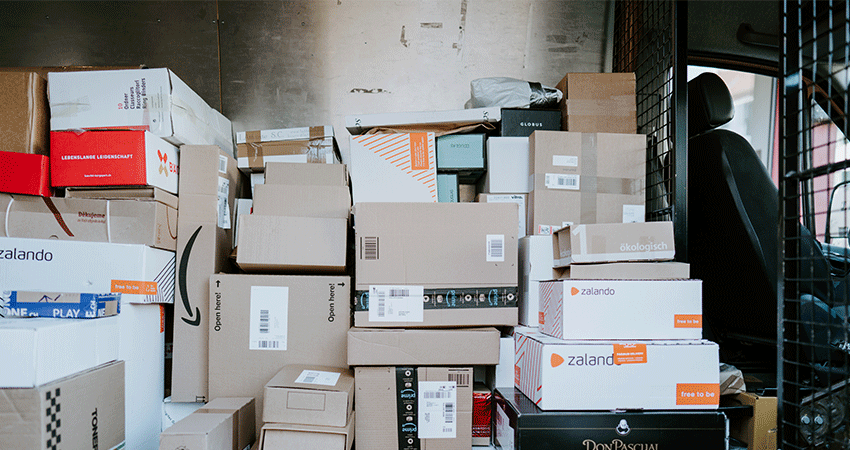Parcel volume dropped 2.2% in the U.S. in 2022, and the five-year outlook is halved (photo credit: Claudio Schwarz on Unsplash)
FedEx saw the biggest U.S. parcel volume falloff in 2022, according to Pitney Bowes’ annual index, and while overall domestic volume last year was down by 2.2%, the pandemic bump in ecommerce helped it outpace the 2019 projection by hitting the target a year ahead of schedule.
Pitney Bowes forecast parcel volume growth will be cut in half from 2023-2028, from a 10.8% CAGR in the trailing five years to a “most likely” CAGR of 5%, out of three different scenarios, “driven by market normalization, inflation and economic uncertainly.”
Significantly, domestic parcel revenue increased 6.5% last year, even in the face of the volume decline, an indication of how much carrier price increases have impacted the market. Revenue per piece, a closely watched metric, increased 8.8%, even as parcels shipped per capita was down 2.3%.
Overall parcel volume was 21.2 billion units in 2022, down from 21.7 billion in 2021, Pitney Bowes reported. All four major carriers tracked – UPS, FedEx, the U.S. Postal Service and Amazon Logistics – saw volume declines, but FedEx was the largest, down 4.8% to 4.1 billion pieces.
The USPS was down 3.2% to 6.7 billion pieces, UPS dipped 2.5% to 5.2 billion, and Amazon remained relatively flat, down .2% to 4.8 billion pieces, according to the Pitney Bowes index. This is in line with lower volumes reported by all four major carriers, and across the industry, although the drop is moderating in the case of FedEx.
Interestingly, the “other” category, which includes regional carriers as well as postal consolidators such as Pitney Bowes, OSM Worldwide, Asendisa and RR Donnelly, saw double-digit increases in both parcel volume (+25%) and revenue (+28.8%) in 2022. Still, this represented a tiny slice of the pie, at 2.3% of the total volume and 1.8% of revenue.
Vijay Ramachandran, vice president of go-to-market enablement and experience for Pitney Bowes, said while the overall parcel volume declined from 2021, hitting the project a year ahead was significant.
“There was a lot of prognostication in the early days of the lockdowns, with people saying COVID would push the industry ahead five to ten years,” Ramachandran said. “We’ve since come back to earth. Still, growth is driven by a fundamental shift and sticky consumer behaviors.”
He said advances in logistics technology and infrastructure have enabled shippers to focus more on service convenience, setting realistic expectations at checkout and the cost to serve model, rather than 1-2 day delivery, Ramachandran said.
“There’s a huge amount of opportunity for retailers to save money and make service more convenient, using ground services that are much more economical,” he said.
With the major shift in population out of urban centers to less populated regions since the pandemic, relocated consumers have brought higher delivery expectations along with them, Ramachandran said. A more dispersed population has also increased the cost to serve model for carriers, he added.
“They tend to buy more frequently, have a higher AOV and higher expectations of speed and specificity on delivery dates, as well as for different options for returns and better tracking,” he said. “All those things are much more mature for urban areas.”
Asked about the U.S. Postal Service’s 10-year plan to upgrade network infrastructure, technology and performance under Postmaster General Louis DeJoy, Ramachandran said shippers are realizing it can be a less expensive option for parcels in the 1 lb.-10 lb. range, and service levels are improving.
For the period from Jan. 4-March 24, the average cross-country delivery time was 2.5 days, the USPS reported, with a 91.2% on-time record for First Class Mail, which includes parcel.
“We consider all carriers, but the USPS, because of its investments in automation and recalibrating its network, is in a period where it’s learning more from the market than it has in a long time,” he said. “In order to have a competitive market, you need more than two key players, need diversity to create competition. You can’t have two dictating pricing.”

